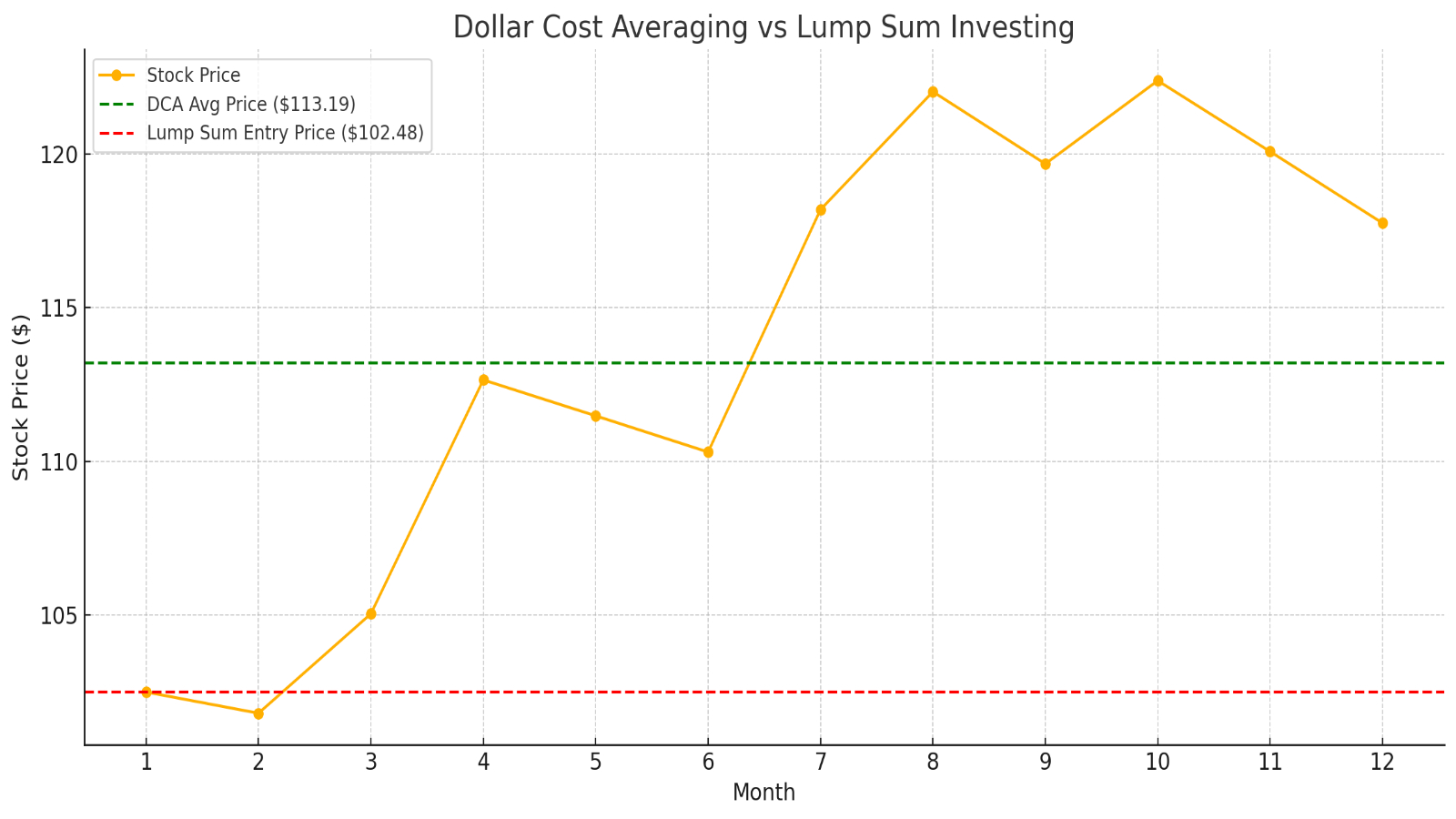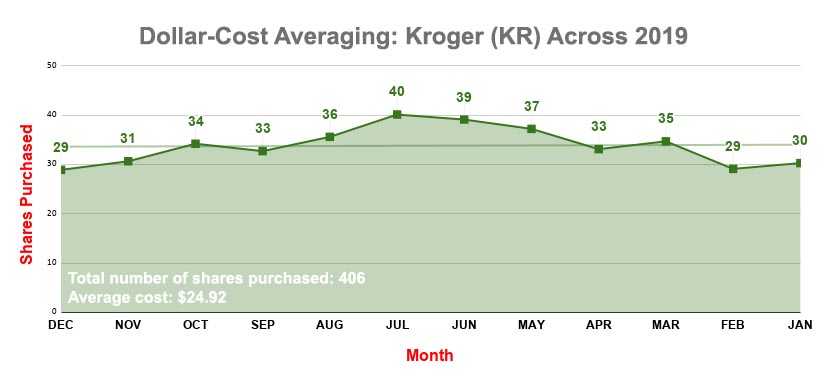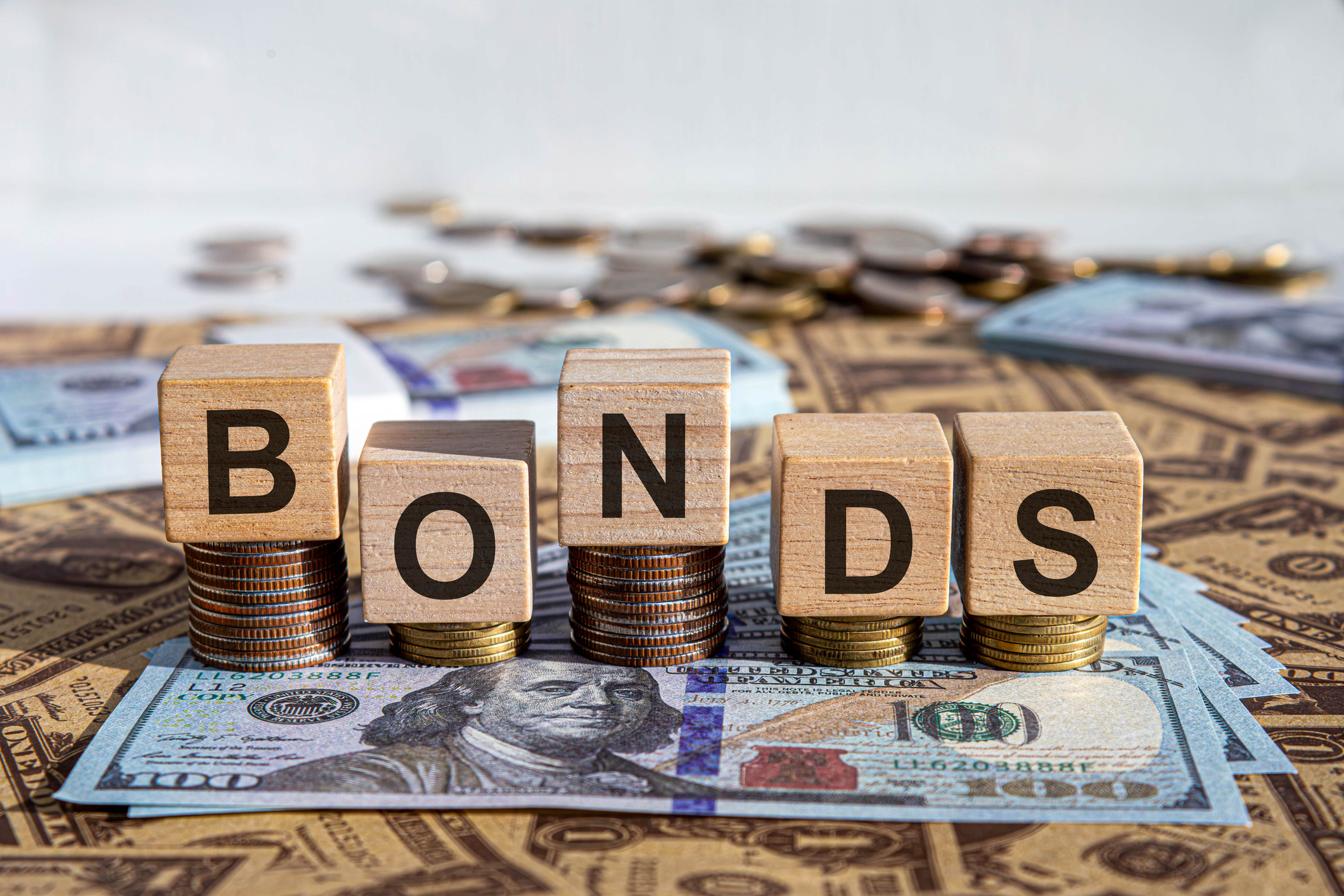Dollar-Cost Averaging Into Stocks: How Does DCA Investing Work?
A brief primer on dollar-cost averaging into stocks, the popular set-it-and-forget-it investing method.


Dollar-cost averaging (DCA) is one of the most important concepts an individual investor can master.
Fortunately, it's also one of the easiest.
The idea of dollar-cost averaging is to invest your dollars in a stock, exchange-traded fund (ETF) or other security in regular, equal portions over time.
From just $107.88 $24.99 for Kiplinger Personal Finance
Become a smarter, better informed investor. Subscribe from just $107.88 $24.99, plus get up to 4 Special Issues

Sign up for Kiplinger’s Free Newsletters
Profit and prosper with the best of expert advice on investing, taxes, retirement, personal finance and more - straight to your e-mail.
Profit and prosper with the best of expert advice - straight to your e-mail.
Sure, you could invest your cash in a single lump sum, but how do you know you're getting the best price? (Remember: The idea is to buy low.)
In the short term, many stock movements can be random, and even the pros are more likely to fail than succeed when trying to precisely time the market.
Dollar-cost averaging doesn't guarantee you the lowest cost basis on your investments. It can, however, produce a lower average cost basis over a longer period of time than lump-sum investing.
And, again, it's easy to do.

How dollar-cost averaging works
If you have a 401(k) or similar plan where you automatically invest a percentage of every paycheck in a retirement plan, guess what? You are already dollar-cost averaging.
That's because every pay period, you're investing the same amount of cash like clockwork.
But say you want to do this in an IRA or brokerage account. Here's an example of how this would work with an individual stock.
You have $10,000 to invest in, say, grocery chain Kroger (KR). You effectively have two options:
1.) Make a lump-sum investment of $10,000. If shares in the supermarket chain decline soon after you make your investment, however, you might kick yourself over your poor timing.
2.) Dollar-cost average, investing the $10,000 gradually and at regular intervals. For instance, you might purchase $833.33 worth of KR stock every month for 12 months.
The beauty of dollar-cost averaging is that if Kroger stock does indeed decline over that period of time, you'll buy KR shares at a lower cost. Thus, you'll get more shares for your $833.33, too.
Here's how dollar-cost averaging with KR would've looked across 2019, assuming you had bought at the closing price of each month:

In short, DCA lets an investor automatically buy more shares in a company when they're cheaper, and fewer shares when they're more expensive.
Nothing's a guarantee, of course
As with everything in investing, DCA is not without its detractors. Dollar-cost averaging can underperform lump-sum investing at times.
But while systematic investing does not guarantee a profit or protect against loss, it can lift a psychological brick or two off your shoulders.
With DCA, you don't need to agonize over whether you should buy right now, or wait for earnings, or wait for a market dip. You just implement the system and keep yourself updated on the stock over time.
Investors also need to consider whether they have the stomach to keep buying when share prices are falling or the stock market is selling off.
Dollar-cost averaging doesn't mean to throw good money after bad if the company's narrative has changed considerably. But it does mean being consistent through short-term ups and downs.
That said, DCA can be a good strategy for long-term investors who just want to set it and forget it.
Related Content
Profit and prosper with the best of Kiplinger's advice on investing, taxes, retirement, personal finance and much more. Delivered daily. Enter your email in the box and click Sign Me Up.

Dan Burrows is Kiplinger's senior investing writer, having joined the publication full time in 2016.
A long-time financial journalist, Dan is a veteran of MarketWatch, CBS MoneyWatch, SmartMoney, InvestorPlace, DailyFinance and other tier 1 national publications. He has written for The Wall Street Journal, Bloomberg and Consumer Reports and his stories have appeared in the New York Daily News, the San Jose Mercury News and Investor's Business Daily, among many other outlets. As a senior writer at AOL's DailyFinance, Dan reported market news from the floor of the New York Stock Exchange.
Once upon a time – before his days as a financial reporter and assistant financial editor at legendary fashion trade paper Women's Wear Daily – Dan worked for Spy magazine, scribbled away at Time Inc. and contributed to Maxim magazine back when lad mags were a thing. He's also written for Esquire magazine's Dubious Achievements Awards.
In his current role at Kiplinger, Dan writes about markets and macroeconomics.
Dan holds a bachelor's degree from Oberlin College and a master's degree from Columbia University.
Disclosure: Dan does not trade individual stocks or securities. He is eternally long the U.S equity market, primarily through tax-advantaged accounts.
-
 Don't Wait Until January: Your Year-End Health Checklist to Kickstart 2026
Don't Wait Until January: Your Year-End Health Checklist to Kickstart 2026Skip the fleeting resolutions and start the new year with a proactive plan to optimize your longevity, cognitive health, and social vitality.
-
 Premium Rewards Cards: More Perks, Higher Fees
Premium Rewards Cards: More Perks, Higher FeesSome issuers are hiking the annual fee on their flagship luxury credit cards by hundreds of dollars. Are they still worth using?
-
 3 Trips to Escape the Winter Doldrums, Including An Epic Cruise
3 Trips to Escape the Winter Doldrums, Including An Epic CruiseThree winter vacation ideas to suit different types of travelers.
-
 How to Master the Retirement Income Trinity: Cash Flow, Longevity Risk and Tax Efficiency
How to Master the Retirement Income Trinity: Cash Flow, Longevity Risk and Tax EfficiencyRetirement income planning is essential for your peace of mind — it can help you maintain your lifestyle and ease your worries that you'll run out of money.
-
 I'm an Insurance Expert: Sure, There's Always Tomorrow to Report Your Claim, But Procrastination Could Cost You
I'm an Insurance Expert: Sure, There's Always Tomorrow to Report Your Claim, But Procrastination Could Cost YouThe longer you wait to file an insurance claim, the bigger the problem could get — and the more leverage you're giving your insurer to deny it.
-
 Could a Cash Balance Plan Be Your Key to a Wealthy Retirement?
Could a Cash Balance Plan Be Your Key to a Wealthy Retirement?Cash balance plans have plenty of benefits for small-business owners. For starters, they can supercharge retirement savings and slash taxes. Should you opt in?
-
 Changes Are Coming for This Invesco Bond Fund
Changes Are Coming for This Invesco Bond FundThe Invesco BulletShares 2026 Corporate Bond ETF's bonds will mature in 2026. Here's what investors should do.
-
 7 Retirement Planning Trends in 2025: What They Mean for Your Wealth in 2026
7 Retirement Planning Trends in 2025: What They Mean for Your Wealth in 2026From government shutdowns to market swings, the past 12 months have been nothing if not eventful. The key trends can help you improve your own financial plan.
-
 What Defines Wealth: Soul or Silver? Good King Wenceslas' Enduring Legacy in the Snow
What Defines Wealth: Soul or Silver? Good King Wenceslas' Enduring Legacy in the SnowThe tale of Good King Wenceslas shows that true wealth is built through generosity, relationships and the courage to act kindly no matter what.
-
 An Investing Pro's 5 Moves to Help Ensure 2025's Banner Year in the Markets Continues to Work Hard for You in 2026
An Investing Pro's 5 Moves to Help Ensure 2025's Banner Year in the Markets Continues to Work Hard for You in 2026After a strong 2025 in the stock market, be strategic by rebalancing, re-investing with a clear purpose and keeping a disciplined focus on your long-term goals.
-
 The Santa Claus Rally Officially Begins: Stock Market Today
The Santa Claus Rally Officially Begins: Stock Market TodayThe Santa Claus Rally is officially on as of Wednesday's closing bell, and initial returns are positive.